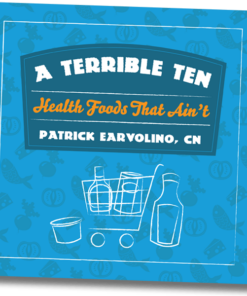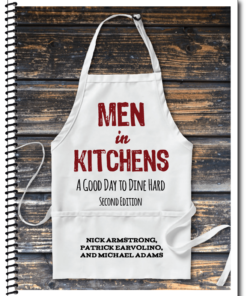By Helen Bullock

Bread Called Cause of Some Skin Ills[spacer height=”20px”]
Fort Worth, Texas—Dr. Arthur G. Schoch of Dallas told Texas family doctors here Wednesday that he has successfully treated many skin-disease patients by removing bread from their diet—and others by removing milk.
The dermatologist spoke at the sixth annual meeting of the Texas Academy of General Practice [TAGP] in Will Rogers Memorial Stadium. He reported that many of his patients with severe, chronic skin disease had improved markedly within a few weeks after they quit eating bread and chemically treated flour. “On the hypothetical assumption that bread and flour, as consumed in this country, contain one or more noxious (injurious) products that could be a major or contributing cause of illness, we are continuing our investigations along this line.”
The milk was banned for patients suffering from penicillin reaction, Dr. Schoch said.
Another speaker, Dr. Vernon S. Knight of Nashville, Tennessee, first brought up the subject of penicillin in milk. “In this country a significant amount of milk now contains penicillin in measurable amounts,” Dr. Knight said. “I believe that some of the hives we see these days may be caused by penicillin consumed in milk.”
Dr. Schoch confirmed that he had treated a number of patients suffering from “perpetuation of penicillin reaction” by removing milk from their diets. How does penicillin get into milk? The veterinarian puts it there indirectly, Dr. Schoch said, by injecting penicillin into the infected udders of dairy cows. This treatment cures the infection quickly, but the cows continue to excrete penicillin in milk for fourteen days, he said. So widespread is this practice, Dr. Schoch said, that much of the milk consumed across the country contains penicillin. (Unless you happen to be sensitive to penicillin, it is nothing to worry about.) Dr. Schoch recalled a Wisconsin cheese maker who purchased a lot of milk that contained so much penicillin it wouldn’t turn sour—and hence wouldn’t make cheese.
Getting back to the sickness caused by bread, which was the topic of Dr. Schoch’s talk, he explained that the trouble comes from the interaction of flour-refining chemicals and the protein of wheat. For twenty-five years or more prior to 1947, he said, nitrogen trichloride was the primary maturing agent used by millers of white flour. Along about 1947, he added, it was shown that this agent produced convulsions and death in dogs, and Federal Food and Drug Commissioner B.P. Dunbar recommended a reduction in the use of this chemical “to a minimum.”
In its place, Dr. Schoch said, chlorine dioxide is now the commonly used maturing and bleaching agent for commercial flours. Chlorine dioxide has been demonstrated not to have the same harmful effects in dogs as had the nitrogen trichloride. However, Dr. Schoch continued, in England recently, in a human case of widespread dermatitis coupled with profound mental depression, the causative agent was found to be bread made from flour treated with nitrogen trichloride—and also bread made from flour treated with chlorine dioxide. In this patient one chemical was as harmful as the other.
Dr. Schoch said that in his own practice patients with one skin disease in particular have shown improvement when they leave off bread; that disease is chronic systemic lupus erythematosus. [Note, added by Dr. Royal Lee: Other poisons can produce this reaction. Hydralazine caused lupus erythematosus in several patients. See Yearbook of Medicine, 1955–56 edition, page 97.]
In an interview Dr. Schoch said store-bought whole wheat breads contain less of the maturing chemicals than white breads but that all commercial breads have some. The three-day meeting closed Wednesday, with the final registration figure of 1,333, including 485 members of TAGP, 101 other doctors, 310 wives, 301 exhibitors, and 136 other guests.
By Helen Bullock, Dallas Morning News staff writer. Reprinted from The Dallas Morning News, Dallas, Texas, Thursday, September 22, 1955, by the Lee Foundation for Nutritional Research.
Note: Lee Foundation for Nutritional Research is a nonprofit, public-service institution, chartered to investigate and disseminate nutritional information. The attached publication is not literature or labeling for any product, nor shall it be employed as such by anyone. In accordance with the right of freedom of the press guaranteed to the Foundation by the First Amendment of the U.S. Constitution, the attached publication is issued and distributed for informational purposes.
 Get self-health education, nutrition resources, and a FREE copy of A Terrible Ten: Health Foods That Ain't ebook.
Get self-health education, nutrition resources, and a FREE copy of A Terrible Ten: Health Foods That Ain't ebook.

